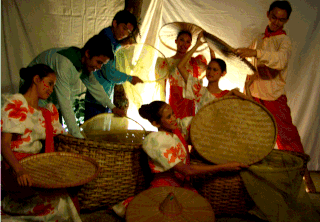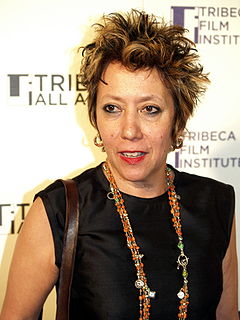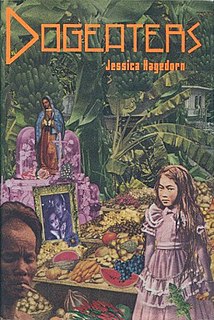
Zarzuela is a Spanish lyric-dramatic genre that alternates between spoken and sung scenes, the latter incorporating operatic and popular songs, as well as dance. The etymology of the name is uncertain, but some propose it may derive from the name of a royal hunting lodge, the Palace of Zarzuela, near Madrid, where that type of entertainment was allegedly first presented to the court. The palace in turn was named after brambles, which grew there, and so the festivities held within the walls became known as "Zarzuelas".

The culture of the Philippines is a combination of cultures of the East and West. Filipino identity was created primarily as a result of pre-colonial cultures, colonial influences and foreign traders intermixing and gradually evolving together. In pre-colonial times, the Philippines was a divided set of nations, islands and tribes being ruled by their own kings, chieftains, lakans, rajahs, datus and sultans. Every nation has its own identity and some are even part of a larger empire outside of what is now the Philippines. Manila, for example, was once part of the Islamic Sultanate of Brunei, and the Sulu Archipelago was also part of the Hindu Majapahit. The advent of colonial rule in the islands marked the beginning of the Philippines as an entity, a collection of Southeast Asian countries united under Spanish Empire.

Jessica Tarahata Hagedorn is a Filipino playwright, writer, poet, and multimedia performance artist.
Honorata de la Rama-Hernandez, commonly known as Atang de la Rama, was a singer and bodabil performer who became the first Filipina film actress.
Bayani Casimiro Sr. was a Filipino dancer who was among the leading stars of bodabil (vaudeville) in the 1930s and 1940s. He also appeared in musical films and later in life, in comedic roles. A tap dancer, he was frequently dubbed as the "Fred Astaire of the Philippines".

The architecture of the Philippines reflects the historical and cultural traditions in the country. Most prominent historic structures in the archipelago are influenced by Austronesian, Chinese, Spanish, and American architectures.
Nicaraguan literature can be traced to pre-Columbian times with the myths and oral literature that formed the cosmogonic view of the world that indigenous people had. Some of these stories are still known in Nicaragua. Like many Latin American countries, the Spanish conquerors have had the most effect on both the culture and the literature. The literature of Nicaragua has had many important literary figures in the Spanish language with internationally prominent writers such as Rubén Darío, who is regarded as the most important literary figure in Nicaragua. He is referred to as the "Father of Modernism" for leading the modernismo literary movement at the end of the 19th century. Other important literary figures include Salomón de la Selva, Carlos Martínez Rivas, Pablo Antonio Cuadra, Alberto Cuadra Mejia, Manolo Cuadra Vega, Pablo Alberto Cuadra Arguello, Ernesto Cardenal, Sergio Ramírez Mercado, Gioconda Belli, José Coronel Urtecho, Alfonso Cortés, Julio Valle Castillo, and Claribel Alegría, among others.
The Filipino Cultural Association (FCA) is one of the first Filipino American collegiate/student associations to be formed in the Metro Washington, DC area. It is the resident Fil-Am student group at The University of Maryland, College Park.
The Manila Grand Opera House was a theater and opera house located in the district of Santa Cruz in Manila on the intersection of Rizal Avenue and Doroteo Jose Street. It was the Philippines' premiere entertainment venue during the Spanish and American colonial periods and the most popular theater in the 1900s. It was also the site of historically significant political meetings. It could entertain crowds of more than 200 people.
Vaudeville in the Philippines, more commonly referred to as bodabil, was a popular genre of entertainment in the Philippines from the 1910s until the mid-1960s. For decades, it competed with film, radio and television as the dominant form of Filipino mass entertainment. It peaked in popularity during the Japanese occupation in the Philippines from 1941 to 1945. Many of the leading figures of Philippine film in the 20th century, such as Dolphy, Nora Aunor, Leopoldo Salcedo and Rogelio de la Rosa, began their showbusiness careers in bodabil.

Leopoldo Salcedo was a Filipino film actor who specialized in portraying dramatic heroes. Dubbed as "The Great Profile", he was said to be among the first kayumanggi or dark-skinned Filipino film stars, in contrast to the lighter-skinned mestizo actors of his generation.

Dogeaters is a novel written by Jessica Hagedorn and published in 1990. Hagedorn also adapted her novel into a play by the same name. Dogeaters, set in the late 1950s in Manila, addresses several social, political and cultural issues present in the Philippines during the 1950s.

Philippine dance has played a tremendous role in Filipino culture. From one of the oldest dated dances called the Tinikling, to other folkloric dances such as the Pandanggo, Cariñosa, and Subli, and even to more modern-day dances like the ballet, it is no doubt that dance in the Philippine setting has integrated itself in society over the course of many years and is significantly imbedded in culture. Each of these dances originated in a unique way and serve a certain purpose, showcasing how diverse Philippine dances are.

Comedy in the Philippines has had a significant presence in Philippine culture for as long as Filipinos have had mediums of entertainment, and has transformed to reflect changing Filipino life.
Walang Sugat is an 1898 Tagalog-language zarzuela written by Filipino playwright Severino Reyes. The music for the original version of the play was written by Filipino composer Fulgencio Tolentino. Walang Sugat was written when the zarzuela became a "potent means" of expressing Filipino nationalism during the Spanish Occupation of the Philippines that followed three centuries of Spanish rule.
Spanky Manikan was a Filipino theater, film and television actor.

Indochristian art, arte indocristiano, is a type of Latin American art that combines European colonial influences with Indigenous artistic styles and traditions.
Filipino Americans have a long history of music in the United States. The Philippines have musical context and varied influences due to indigenous traditions and early colonial influences of Spanish and American occupation. During occupation by the United States, many Filipinos were recruited for manual labor along the West Coast. These early laborers commonly would perform Spanish-influenced rondallas as well as choral groups. With many Filipinos living in the United States beginning around the 1900s, Filipinos have contributed towards early Americana staples such as blues and jazz, and continue to influence more modern contemporary genres such as hip hop and rock. American music has also been influential in the Philippines for artists and vice versa. Though contributing to the evolution of American music, large number of Filipino Americans have a strong identity with culture of the Philippines by participating or organizing traditional dances and musical performances, largely in the form of PCNs on university campuses. Traditional dances and musical performances commonly practiced in the US are rondallas, choral groups, and gong chime ensembles. College campuses often organize performances on campuses, but can also have characteristics unique to America, as many Filipino Americans want to share their experiences of living in America and perform a more neo traditional variation of traditional performances.
Filipino-American Art includes art and music forms done by Filipino Americans. It has been growing in number in 2016. Filipino Americans are starting to be known for art, singing and even dancing. As we go back in history like Americans, Filipinos have been using the form of art to express themselves, to tell a story about their ancestors, to give a voice to those who feel like they do not have a voice or the right to speak up. Filipino American Artist also uses all types of art to have this sense of belonging and identity. Going back to history the Philippines was taken over by America and Spain, and since then some believe they do not know who they exactly are. Filipino Americans struggle to find their own identity, because like all Asian Americans they are looked down upon because there would be people who categorize them as only “Filipino” but there are other people who can also categorize them as only "American". This stigma results in identity loss, not being able to know where you belong and how to fit in. But with the help of different forms of art it gives the opportunity for Filipino Americans to be in touch with their Filipino roots as well as their American roots.
Dances produced and performed by Filipino Americans have long been a staple within the Filipino American community as an art form which has been used to educate others on culture, national identity, and community as a whole. This art form is an example of a commentary set forth by Filipino Americans and embodies many important issues, such as nationalism, orientalism, as well as the historical and modern origins of both Filipinos and Filipino Americans. From this commentary emerged the Pilipino Cultural Night or PCN as it is commonly abbreviated, in which the focus was placed on Filipino Students and their communities.








